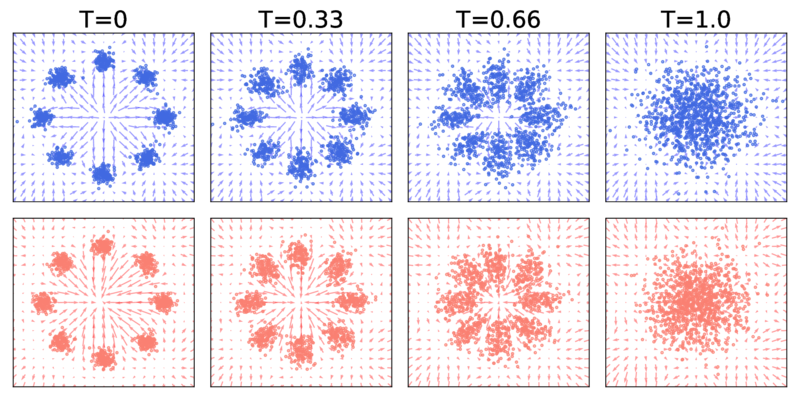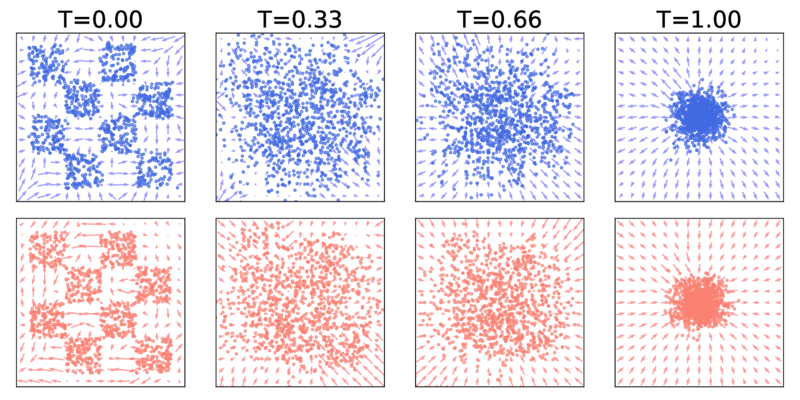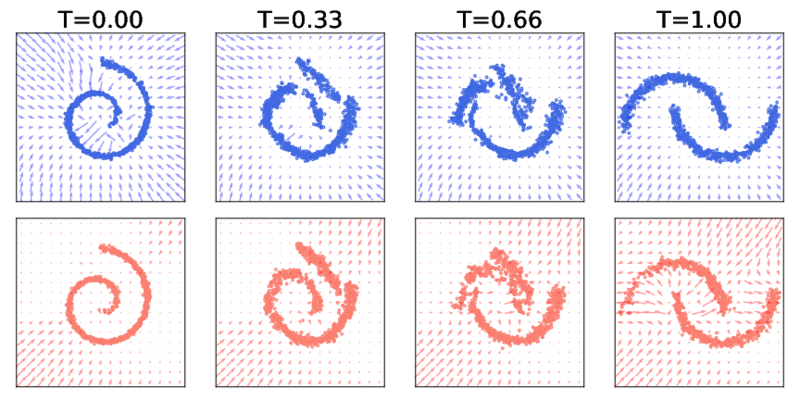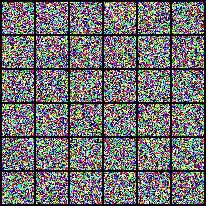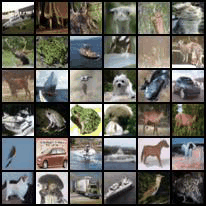SB-FBSDE: Likelihood Training of Schrödinger Bridge using Forward-Backward SDEs Theory [ICLR 2022]
Official PyTorch implementation of the paper "Likelihood Training of Schrödinger Bridge using Forward-Backward SDEs Theory (SB-FBSDE)" which introduces a new class of deep generative models that generalizes score-based models to fully nonlinear forward and backward diffusions.
This repo is co-maintained by Guan-Horng Liu and Tianrong Chen. Contact us if you have any questions! If you find this library useful, please cite ⬇️
@inproceedings{chen2022likelihood,
title={Likelihood Training of Schr{\"o}dinger Bridge using Forward-Backward SDEs Theory},
author={Chen, Tianrong and Liu, Guan-Horng and Theodorou, Evangelos A},
booktitle={International Conference on Learning Representations},
year={2022}
}
This code is developed with Python3. PyTorch >=1.7 (we recommend 1.8.1). First, install the dependencies with Anaconda and activate the environment sb-fbsde with
conda env create --file requirements.yaml python=3
conda activate sb-fbsdepython main.py \
--problem-name <PROBLEM_NAME> \
--forward-net <FORWARD_NET> \
--backward-net <BACKWARD_NET> \
--num-FID-sample <NUM_FID_SAMPLE> \ # add this flag only for CIFAR-10
--dir <DIR> \
--log-tb To train an SB-FBSDE from scratch, run the above command, where
PROBLEM_NAMEis the dataset. We supportgmm(2D mixture of Gaussian),checkerboard(2D toy dataset),moon-to-spiral,mnist,celebA32,celebA64,cifar10.FORWARD_NET&BACKWARD_NETare the deep networks for forward and backward drifts. We supportUnet,nscnpp, and atoynetwork for 2D datasets.NUM_FID_SAMPLEis the number of generated images used to evaluate FID locally. We recommend 10000 for training CIFAR-10. Note that this requires first downloading the FID statistics checkpoint.DIRspecifies where the results (e.g. snapshots during training) shall be stored.log-tbenables logging with Tensorboard.
Additionally, use --load <LOAD> to restore previous checkpoint or pre-trained model.
For training CIFAR-10 specifically, we support loading the pre-trained NCSN++ as the backward policy of the first SB training stage (this is because the first SB training stage can degenerate to denoising score matching under proper initialization; see more details in Appendix D of our paper).
Other configurations are detailed in options.py. The default configurations for each dataset are provided in the configs folder.
To evaluate SB-FBSDE on CIFAR-10 (we achieve FID 3.01 and NLL 2.96), create a folder checkpoint then download the model checkpoint and FID statistics checkpoint either from Google Drive or through the following commands.
mkdir checkpoint && cd checkpoint
# FID stat checkpoint. This's needed whenever we
# need to compute FID during training or sampling.
gdown --id 1Tm_5nbUYKJiAtz2Rr_ARUY3KIFYxXQQD
# SB-FBSDE model checkpoint for reproducing results in the paper.
gdown --id 1Kcy2IeecFK79yZDmnky36k4PR2yGpjyg After downloading the checkpoints, run the following commands for computing either NLL or FID. Set the batch size --samp-bs <BS> properly depending on your hardware.
# compute NLL
python main.py --problem-name cifar10 --forward-net Unet --backward-net ncsnpp --dir ICLR-2022-reproduce
--load checkpoint/ciifar10_sbfbsde_stage_8.npz --compute-NLL --samp-bs <BS># compute FID
python main.py --problem-name cifar10 --forward-net Unet --backward-net ncsnpp --dir ICLR-2022-reproduce
--load checkpoint/ciifar10_sbfbsde_stage_8.npz --compute-FID --samp-bs <BS> --num-FID-sample 50000 --use-corrector --snr 0.15